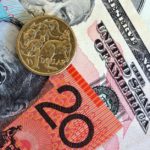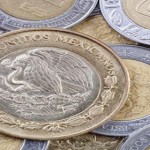New Zealand dollar rose to its highest point in one month against the US counterpart, after a report showed that consumer inflation in New Zealand accelerated at the fastest pace in two years, fomenting speculations that the central bank will consider an increase in borrowing costs.
NZD/USD reached a session high at 0.8408 during the early phase of Asian trade, also the pairs highest level since September 19th, after which consolidation followed at 0.8391. Support was likely to be found at October 14th low, 0.8308, while resistance was to be met at September 19th high, 0.8436.
Earlier today Statistics New Zealand reported that the index of consumer prices (CPI) in the country rose 0.9% during the third quarter of the year, marking the fastest rate of increase since Q2 2011, following the 0.2% gain in the second quarter. On annual basis, the CPI reached 1.4% during Q3, doubling the increase rate, recorded in Q2, 0.7%, and also surpassing preliminary estimates of a 1.2% inflation. A major factor behind this result appeared to be the higher prices of houses and utility services in the country, as they rose 3.2% during the third quarter.
Two-year interest rate swaps rose to the highest level since 2011, as traders are certain that the Reserve Bank of New Zealand (RBNZ) will increase its benchmark interest rate from the current record low level of 2.50% by June next year, according to data by Bloomberg News. “Because of the resilient economy and inflation concerns,” market players are expecting a rate increase in New Zealand, said Kengo Suzuki, the chief currency strategist in Tokyo at Mizuho Securities Co., cited by the same media. “New Zealand is almost the only developed country with a rate increase coming into sight, so the kiwi is likely to remain strong.”
Meanwhile, appetite for high-yielding currencies, such as the kiwi dollar, was spurred after Senate leaders renewed debates on the US debt ceiling, with the deadline for action already on the horizon.
In addition, after US markets closed on Tuesday, Fitch Ratings, the only ratings agency, that still has an AAA rating on the United States, put US Treasury bonds on Rating Watch Negative, Investing.com reported. This could be considered as an indication that Fitch was intending to reduce its rating on US sovereign debt. “The prolonged negotiations over raising the debt ceiling … risks undermining confidence in the role of the U.S. dollar as the preeminent global reserve currency, by casting doubt over the full faith and credit of the U.S.”, Fitch Ratings said in a statement.
Elsewhere, the kiwi dollar was advancing against the Aussie, as AUD/NZD cross fell 0.35% on a daily basis to trade at 1.1336 at 6:46 GMT.





